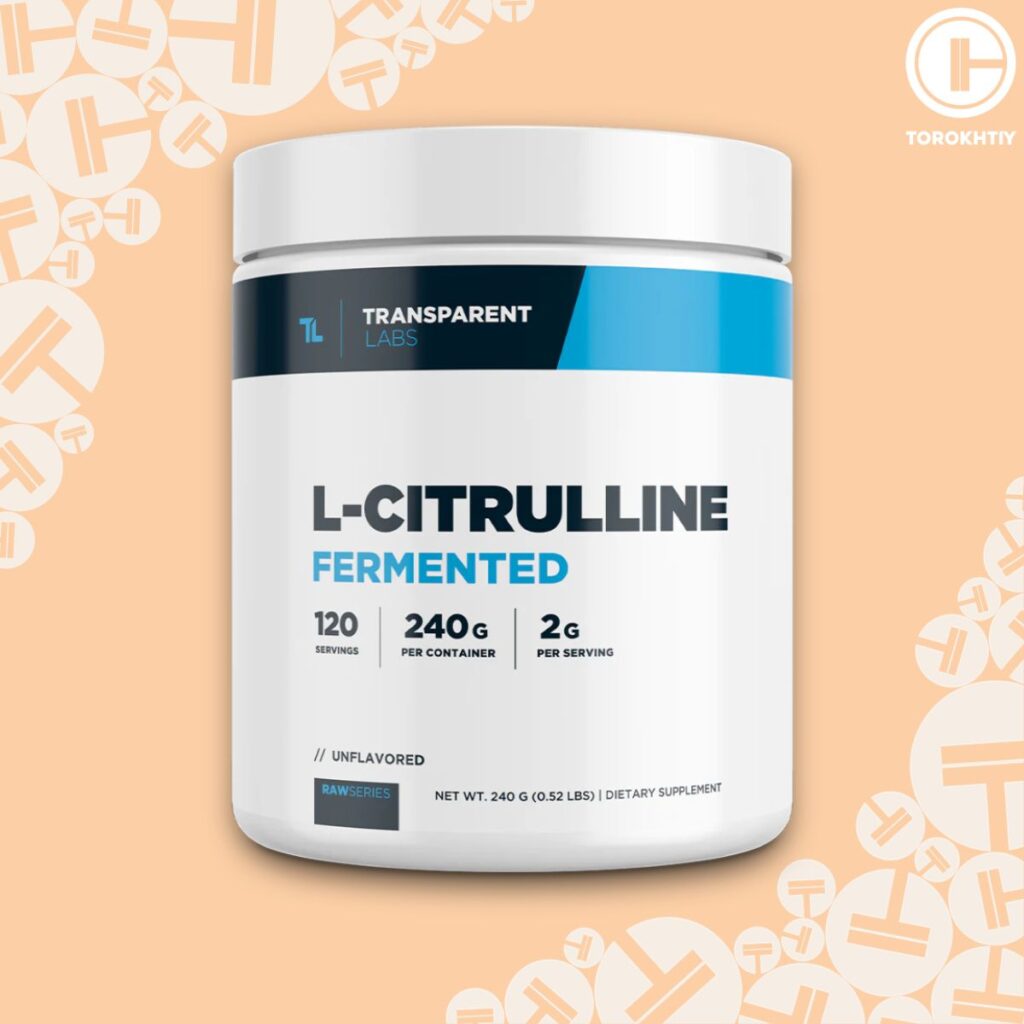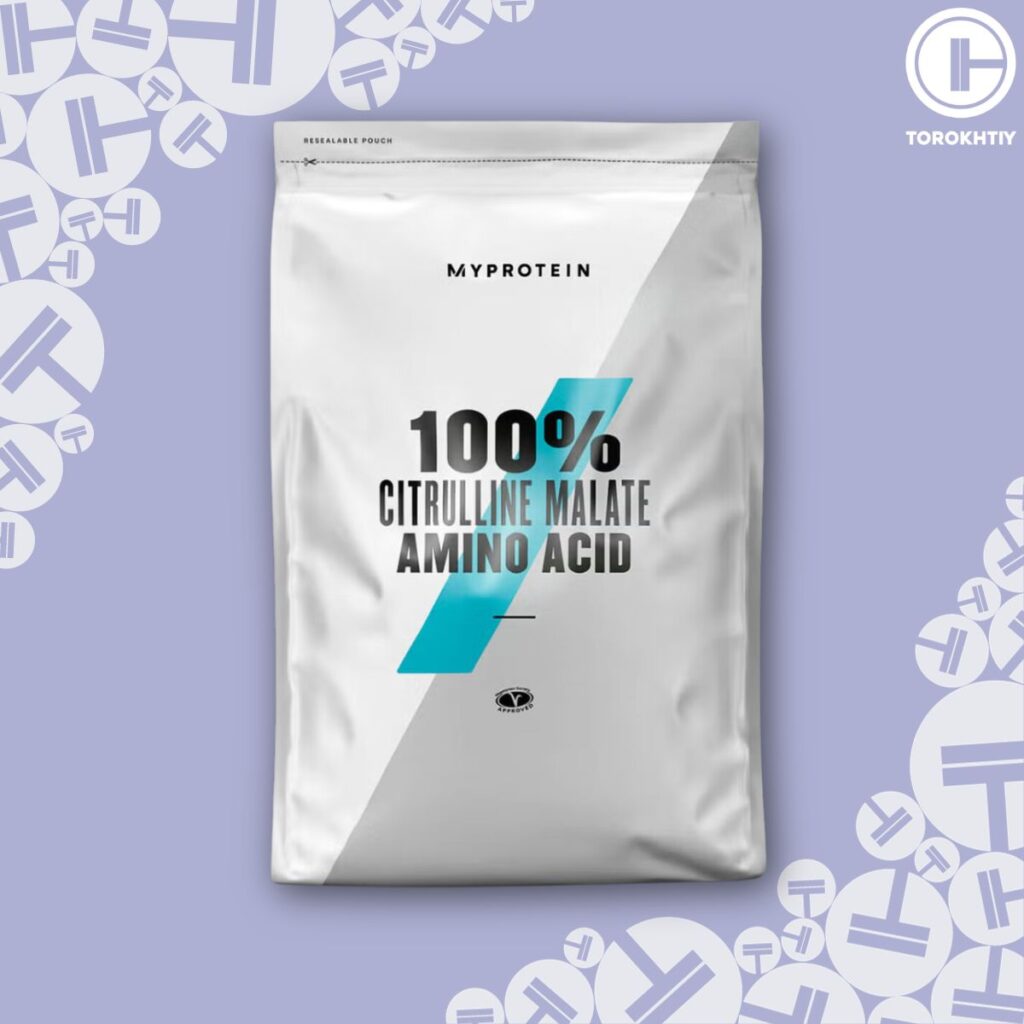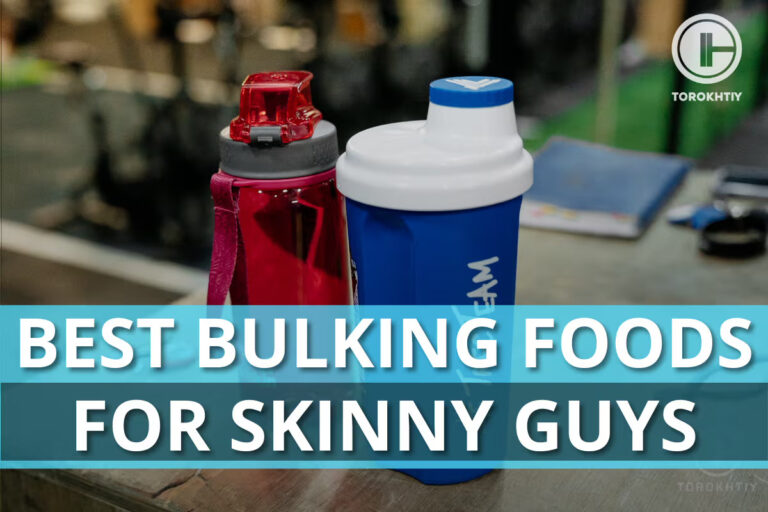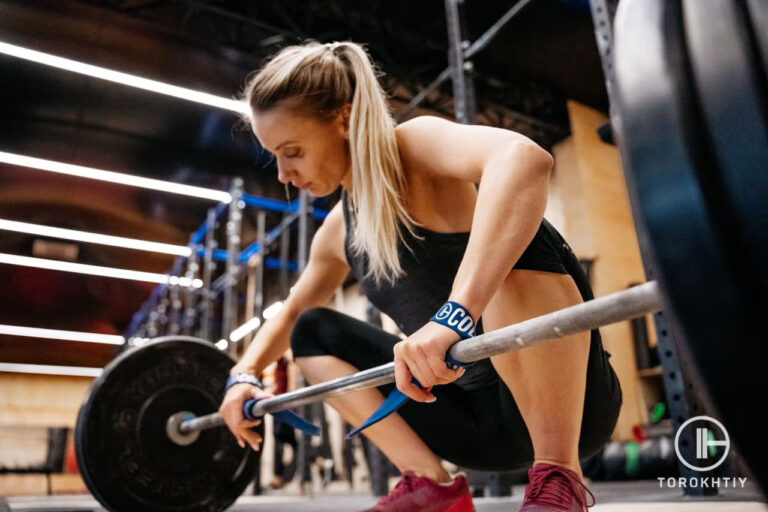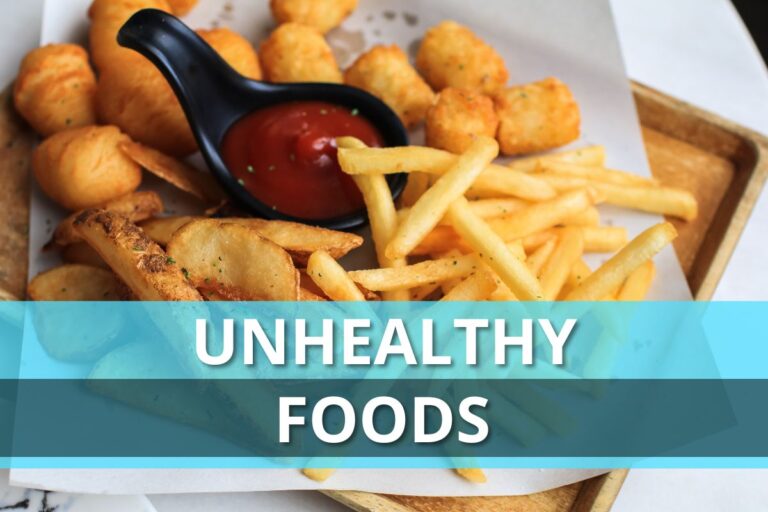7 Best L-Citrulline Foods Nutritionists Recommend
L-citrulline foods and supplements support nitric oxide synthesis, energy production, improve muscle soreness and growth, support heart and metabolic health, and improve erectile dysfunction. We discuss what citrulline is, purported benefits, foods high in citrulline, and will suggest a few supplements.
L-citrulline foods include melons, squashes, and gourds, with watermelon among the highest of the L-citrulline rich foods. There are also supplemental forms that provide a consistent dose of citrulline. Either way, citrulline can improve exercise performance and support health.
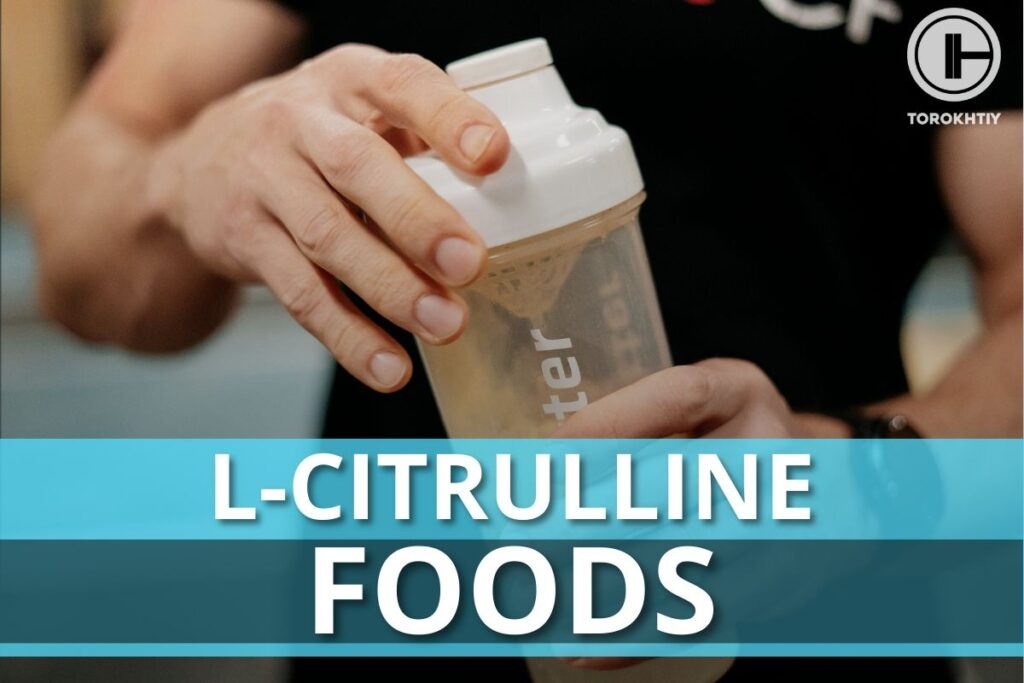
What Is L-Citrulline and What Are Its Benefits?
L-citrulline is a non-essential amino acid. Benefits include:
✅ Increase Nitric Oxide Production
L-citrulline acts as an endogenous precursor to another amino acid, L-arginine, both of which are involved with nitric oxide production. Supplementation increases L-arginine production in a dose-dependent manner that can augment nitric oxide signaling, thereby potentially increasing NO production.
This has been shown to be more effective than using equivalent doses of L-arginine, which at higher doses (~13g daily) has been shown to induce gastrointestinal complications not seen with L-citrulline (well-tolerated up to 15g daily).
Nitric oxide promotes dilation of the blood vessels, which helps reduce blood pressure and increase blood flow, thereby increasing oxygen and nutrient delivery to muscles and clearing metabolic byproducts.
✅ Increase Energy Production Efficiency
Citrulline malate has been shown to increase muscular ATP efficiency due to increased nitric oxide synthesis. A dose of 6000 mg citrulline for 3 days appears to promote ATP production from aerobic pathways.
✅ Improve Muscle Soreness
In a study of weightlifters, ingestion of citrulline malate 8 g with sucrose 10 g daily appeared to reduce muscle soreness and therefore, fatigue, improving performance on later sets of an exercise.
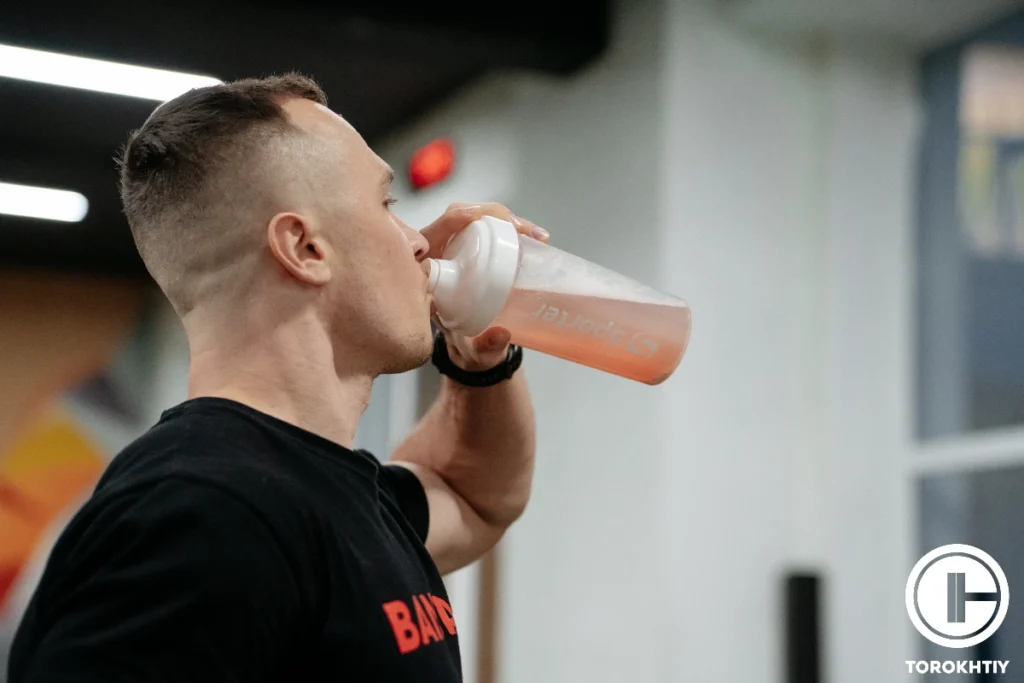
✅ Support Cardiometabolic Health
L-citrulline supplementation may impart vasoprotective effects due to possible improved endothelial vasodilator function as a result of increased NO production.
Patients with heart failure with preserved ejection fraction experienced improved pulmonary artery pressure when given 3g citrulline for 8 weeks.
Meanwhile, a small study on middle-aged adults with prehypertension given a watermelon extract that consisted of 1350 mg L-citrulline and 650 mg arginine taken twice daily for 6 weeks saw a reduction in blood pressure.
A study of healthy middle-aged men given 5600 mg L-citrulline daily for 1 week experienced improvements in arterial stiffness although no significant improvements were found in blood pressure.
✅ Improves Mild to Moderate Erectile Dysfunction
In a study of 24 men aged 56.6 ± 9.8 years, those who took L-citrulline 1.5 g daily for 1 month had statistically significant improvements in the erection hardness score and increases in the mean number of intercourses per month when compared to placebo.
What Are 7 Best Foods High In L-Citrulline?
The main foods rich in citrulline are melons. Watermelon has the highest average concentration ranging from 3.9 to 28.5 mg/g dry weight. Other foods with citrulline include muskmelons, bitter melons, squashes, gourds, cucumbers, and pumpkins.
1. Watermelon
Watermelon fruit contain around 90% water with some relatively small amount of sugars – around 5%. In a 100-gram serving, you can expect about 30 kcal of energy and quite low amounts of essential nutrients – because of high water content. The only vitamin that is seen in “higher” amounts would be vitamin C.
In 1g of wet weight of watermelon you can expect roughly 2mg of L-citrulline. Which means that if you would like to consume for example 6g of L-citrulline, before workout, from watermelon, you would need to consume roughly 3kg of watermelon 🙂 – probably not the best way.
Because watermelon is a fruit that contains the highest amounts of L-citrulline and as you see, getting the effective dose consistently would be quite difficult, I’d skip suggesting its consumption for that reason only. But it can be a great addition, especially because it can help you with your hydration status.
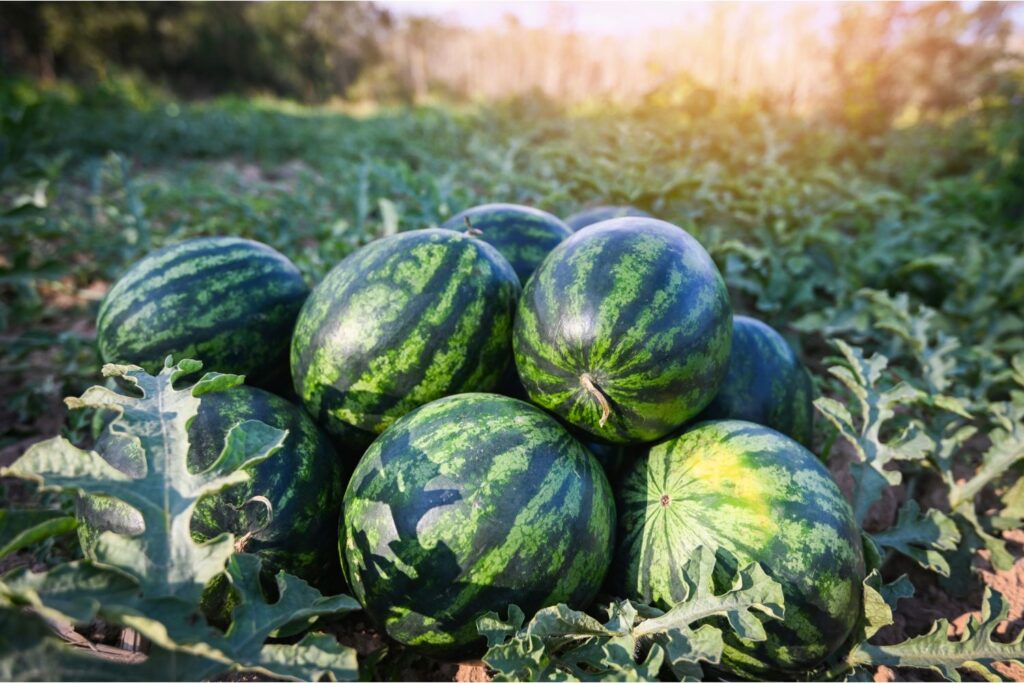
2. Melon (Honeydew)
Melon (Honeydew) , just like watermelon, is around 90% of water. Slightly higher carbohydrate content and around 36 kcal in 100g. Not a bad source of vitamin C – like most of the melons tbh. In 100g you can also expect around 230mg of potassium which is quite good considering high water content.
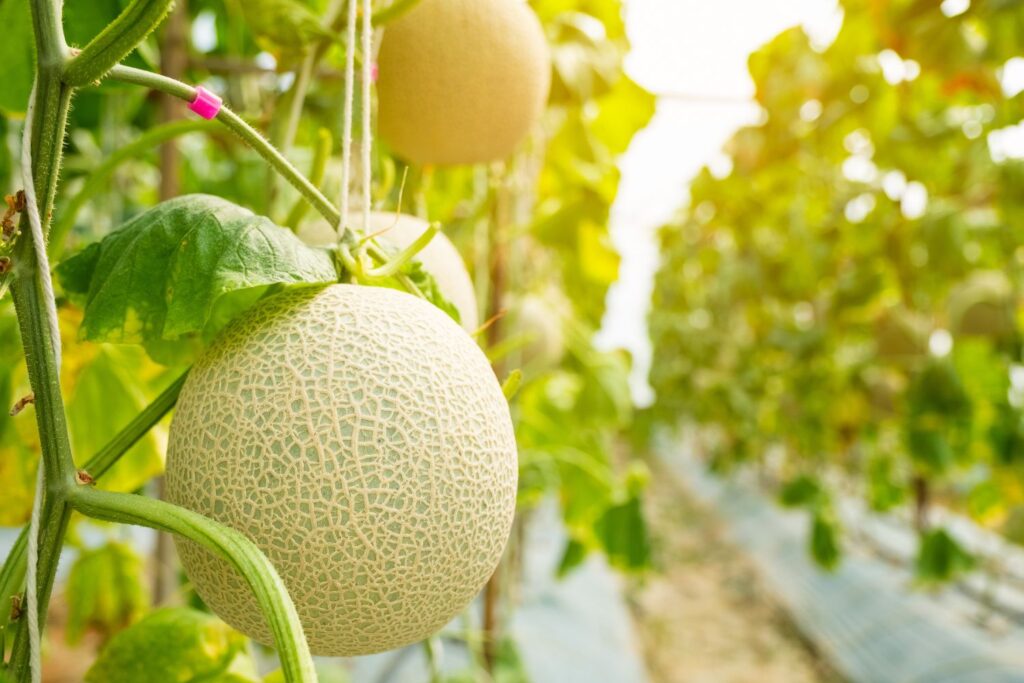
3. Cucumber
Cucumber is another one in the same family as watermelon. In 100g you get 95% of water and around 3-4g of carbohydrates which are responsible for its kcal content ~16kcal. Protein and fat are basically nonexistent from a nutrition perspective 🙂. What you can look for in cucumber is vitamin K. You may get around 16mcg of vitamin K which is around 16% of adequate intake, and some trace to small amounts of other vitamins and minerals – not bad for a vegetable with 95% water.
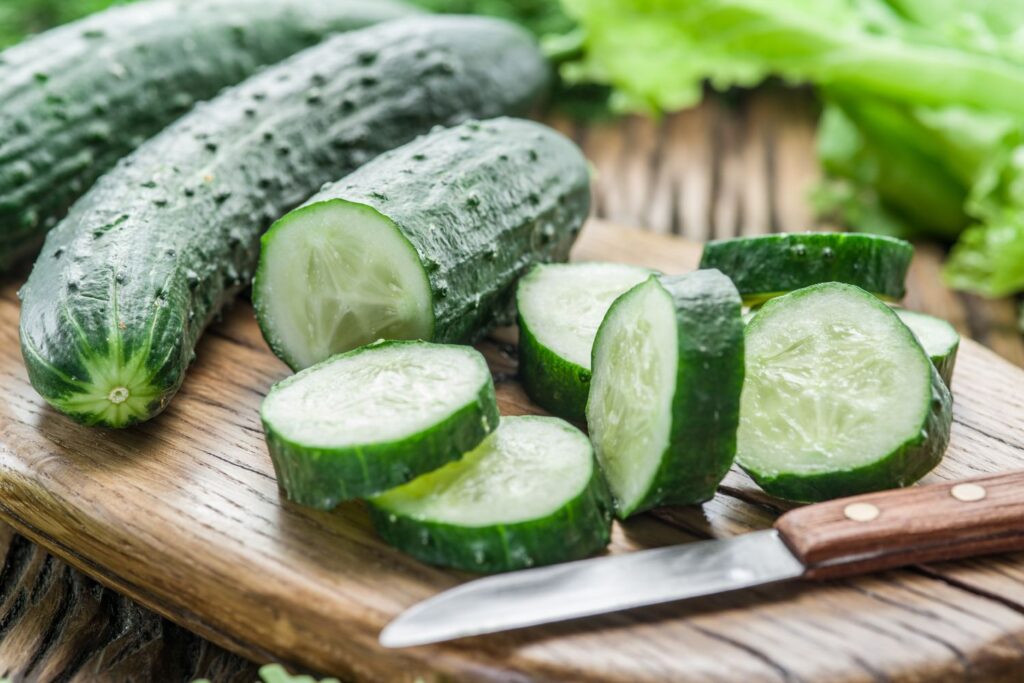
4. Pumpkin
Pumpkin is another one on the list of foods rich in L-citrulline. Around 90% of water, roughly 26 kcal and 6g of carbohydrates in 100g of raw pumpkin. Good source of vitamin A, C and potassium. Pumpkin is also one of the good natural sources of lutein. Don’t forget about pumpkin seeds!
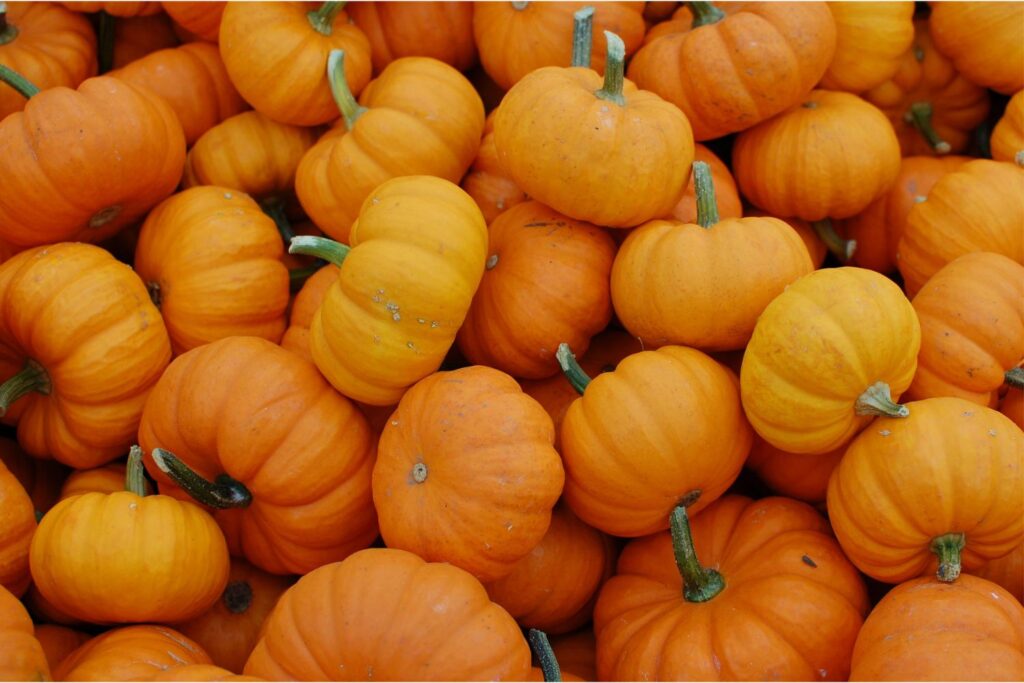
5. Cantaloupe
Cantaloupe, a sweet fruit that in 100g contains ~34kcal, around 90g (90%) of water, 8g of carbohydrates with neglectable amounts of protein and fat. Good source of potassium, vitamins A and C, and lutein.
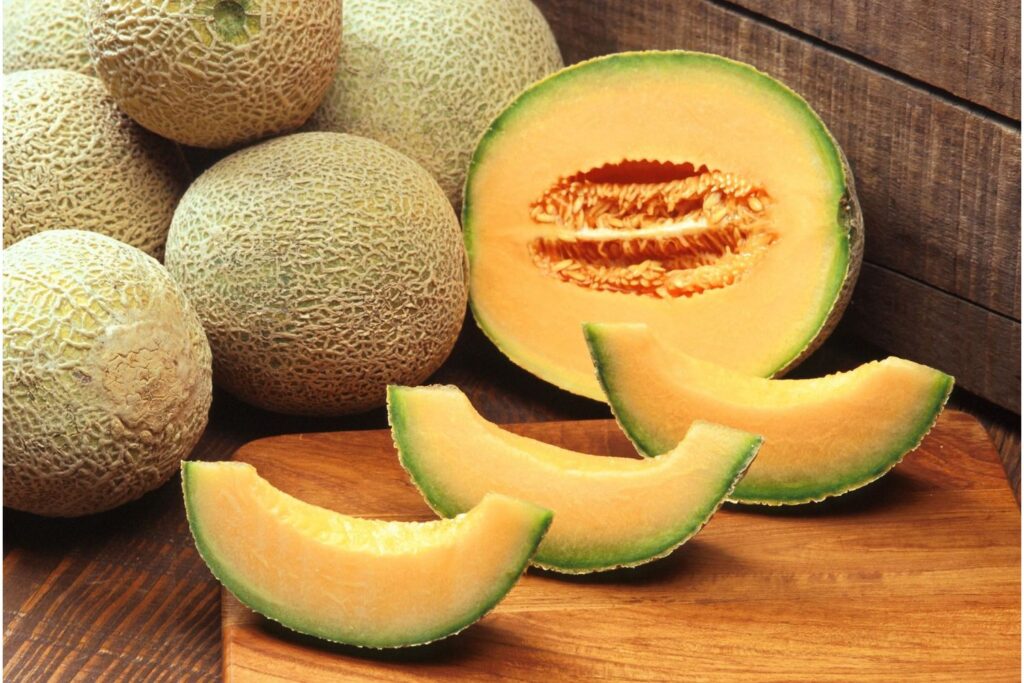
6. Zucchini
Zucchini (summer squash). More than 95% of water. In 100g you can expect around 15kcal and 3g of carbs. Like most of the Cucurbitaceae family, zucchini is also a good source of potassium, vitamin C, vitamin A. Some small amounts of vitamin K and folate. Necessary for your favorite ratatouille.
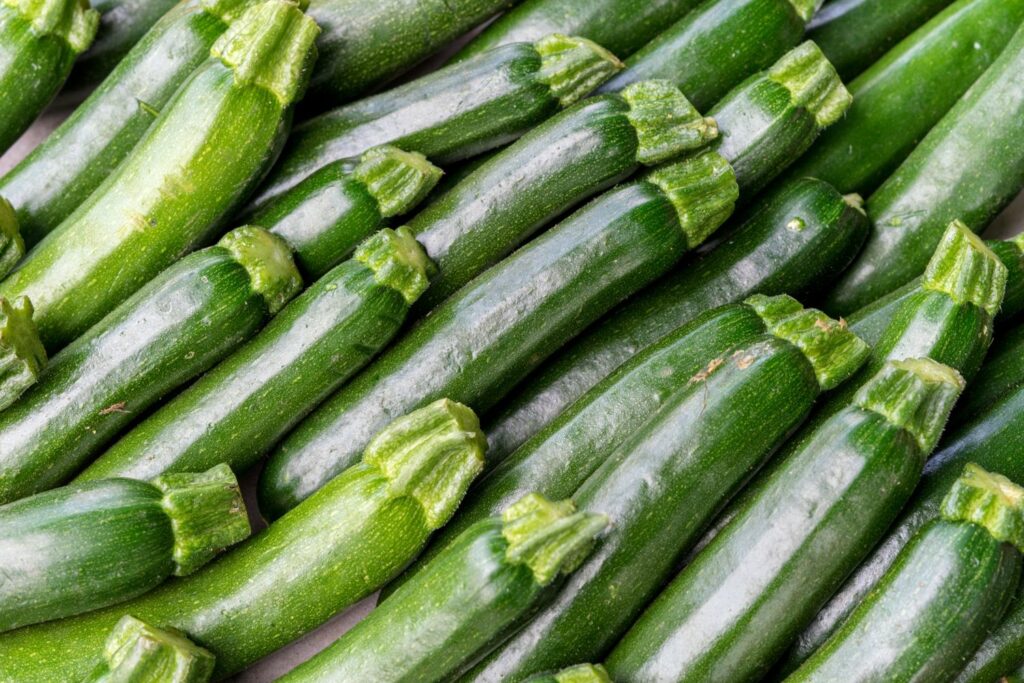
7. Beetroots
Beetroots have nothing to do with l-citrulline like foods we mentioned above. However we know that a lot of you folks are looking to increase L-Citrulline intake because of its effects on NO production. So if you are here for that reason there is also another natural way of doing that (boosting your NO production) independent of L-citrulline consumption.
Beetroots or beetroot juice are rich in nitrates which, when consumed, can increase plasma NO levels. So if you are looking to boost those levels in a natural way it might be worth trying to do that from a few different angles.
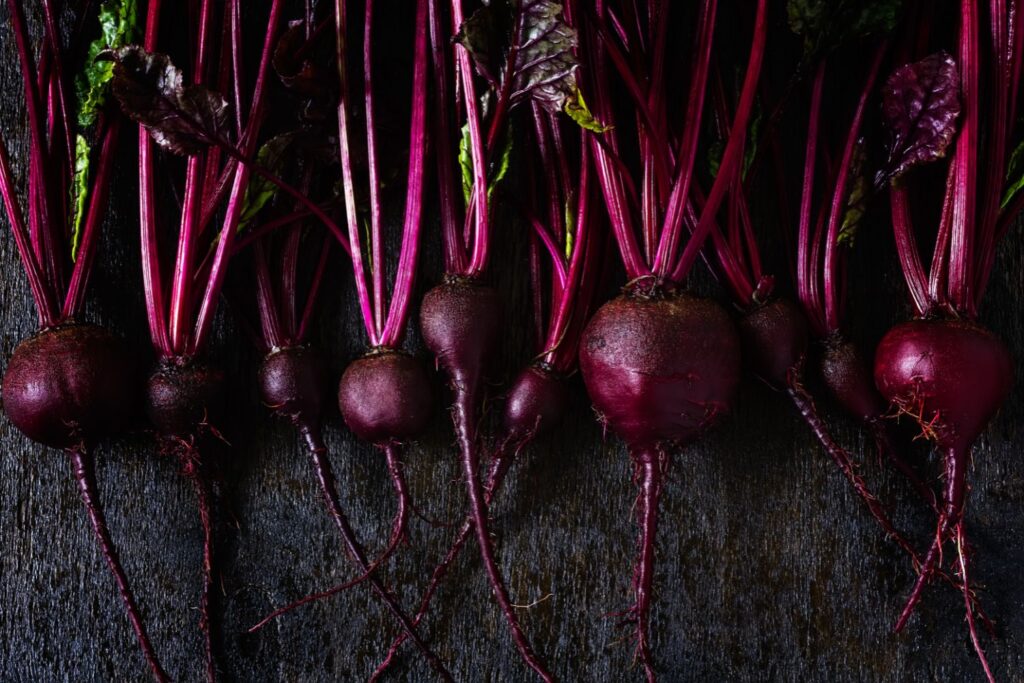
What Is the Most Practical Way to Get the Needed Dosage of Citrulline?
While foods that contain L-citrulline can offer many other nutrients, the most practical way to get a consistent amount of citrulline would be via supplementation. The two most common forms of citrulline are L-citrulline and citrulline malate.
Citrulline malate is L-citrulline combined with malate. The combination with malate appears to confer a synergistic effect. Malate supplementation has been suggested to increase energy production, increase the rate of ATP production, and mitigate lactic acid production.
However, will malate supplementation result in significant improvements in performance is not known.
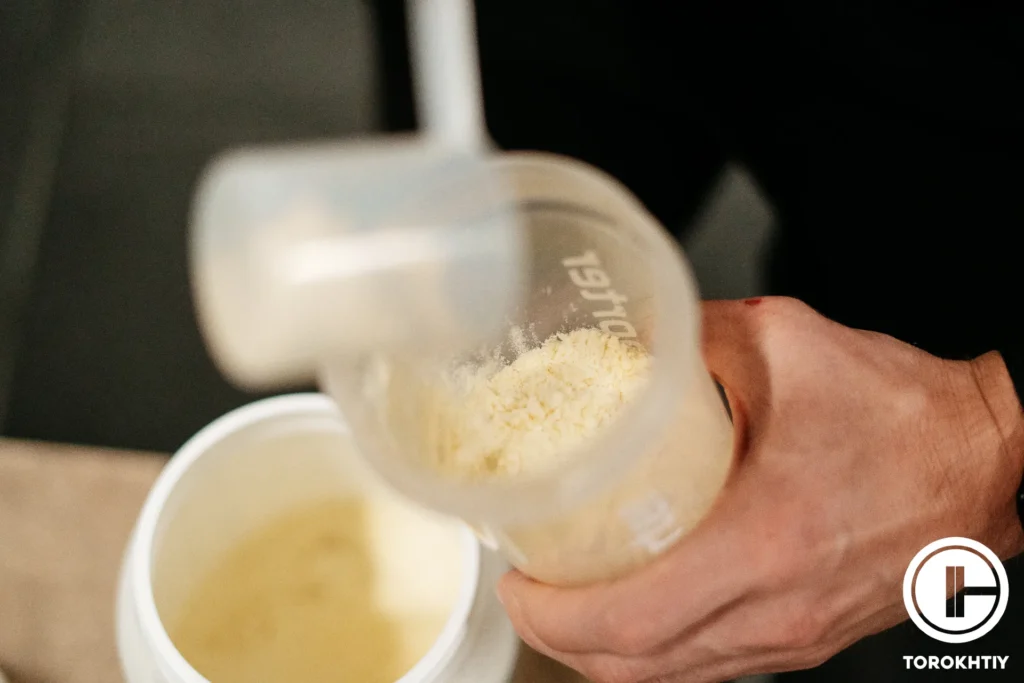
How Do You Take Citrulline for Best Results?
Studies looking at the impact of L-citrulline supplementation on strength and exercise performance found small but statistically significant improvements. Supplementation protocols vary.
The minimum effect dose of citrulline is 3g daily and of citrulline malate 2:1 is ~4g daily. The optimal dose of citrulline for exercise performance, ingested 60–90 minutes before exercise, seems to be between 8–10g daily and with citrulline malate is between 10–12g daily. A maximum effective tolerable dose is up to 10–15g daily.
Approximately 7 days of continuous supplementation has been suggested to improve the likelihood of positive outcomes. More research is required regarding the potential benefits for high intensity exercise performance.
The recommended regimen when using L-citrulline to support circulatory health or to alleviate erectile dysfunction is 2000 mg three times daily with meals (total 6000 mg daily) although L-citrulline does not necessarily need to be taken with meals.
Transparent Labs Pure L-Citrulline
- Form: Powder
- Suitable for Vegans: Yes
- Servings per Container (3g): 80
- Price per Serving: ~$0.23
- Company Founded: 2012
- Recommended by Athletes: Hafthor Bjornsson, Paul Sklar, Sean Harris
Transparent Labs Pure L-Citrulline Nitric Oxide Synthesizer is a pure L-citrulline supplement that provides 2000 mg of fermented L-citrulline in each scoop and nothing else. The minimum effective dose is 3000 mg daily and therefore, a dose of two scoops daily would be required to achieve this.
Each scoop is recommended to be mixed with 6–8 oz of your beverage of choice at least before and for enhanced recovery, after exercise. Transparent Lab products are generally Informed Choice-certified; contain no artificial sweeteners, colouring, and preservatives; and are gluten-free and non-GMO.
MyProtein 100% Citrulline Malate Powder is a pure citrulline and malate combined supplement in a 2:1 ratio, which is the optimal citrulline to malate ratio. In order to achieve at least 6 g of citrulline malate before training, it is recommended to take 1 tsp mixed with your beverage of choice.
FAQ
What Food Has the Highest Citrulline?
Watermelon has the highest citrulline content providing a range of 3.9–28.5 mg/g dry weight, 16.6 mg/g dry weight in seeded types, and 20.3 mg/g dry weight in seedless types.
Content varies between different flesh colours and flesh versus rind, as well. Red flesh watermelons have less citrulline (7.4 mg/g dry weight) than yellow (28.5 mg/g dry weight) or orange (14.2 mg/g dry weight).
The rind, often thrown away, contains more citrulline than flesh on a dry weight basis (24.7 mg/g dry weight versus 16.7 mg/g dry weight).
Which Fruit Is Rich in Citrulline?
The cucurbitaceous fruits are known to be rich sources of citrulline. These include bitter melon, cucumber, muskmelon, pumpkin, bottle gourd, dishrag gourd, and wax gourd.
Is 6G of Citrulline Too Much?
A daily dose of 6 g of citrulline has been shown to be effective for enhancing sports performance, supporting circulatory health, and alleviating erectile dysfunction. Even a higher dose between 8–10g of citrulline has been shown to be more effective for performance. In terms of citrulline malate in a 2:1 ratio, about 10-12g daily seems to be the optimal dose for performance.
Conclusion
Citrulline has been shown to enhance exercise performance by improving blood flow, energy production, and muscle recovery. It can also be helpful for supporting circulation, metabolism, and mild to moderate erectile dysfunction in men.
Citrulline is the most dense in watermelon, but generally present in the cucurbitaceous melons as well as in supplements in the form of L-citrulline or citrulline malate.
What do you think about watermelon or watermelon juice as your main source of citrulline? Have you tried supplements in the past? What was your experience like? Let us know, below!
Also read:
- L-Citrulline vs L-Arginine
- When Should You Take Glutamine
- L Carnitine vs Cla
- Acetyl L Carnitine or L Carnitine Tartrate
- Acetyl L-Carnitine for Weight Loss
- Best L-Citrulline Supplement
- L Citrulline Before Workout
- L Arginine Weight Loss
References
- Edzard Schwedhelm et al., “Pharmacokinetic and pharmacodynamic properties of oral L-citrulline and L-arginine: impact on nitric oxide metabolism,” British Journal of Clinical Pharmacology 65, no. 1 (2007): 51-59.
- Grimble George, “Adverse Gastrointestinal Effects of Arginine and Related Amino Acids,” The Journal of Nutrition 137, no. 6 (2007): 1693S-1701S.
- Christophe Moinard et al., “Dose-ranging effects of citrulline administration on plasma amino acids and hormonal patterns in healthy subjects: the Citrudose pharmacokinetic srudy,” British Journal of Nutrition 99 (2008): 855-862.
- David Bendahan et al., “Citrulline/malate promotes aerobic energy production in human exercising muscle,” British Journal of Sports Medicine 36, no. 4 (2002): 282-9.
- Joaquin Pérez-Guisado et al., “Citrulline malate enhances athletic anaerobic performance and relieves muscle soreness,” The Journal of Strength and Conditioning Research 24, no. 5 (2010):1215-22.
- Antoni Sureda et al., “L-citrulline-malate influence over branched chain amino acid utilization during exercise,” The European Journal of Applied Physiology, 110, no. 2 (2010): 341-51.
- Timothy D. Allerton et al., “l-Citrulline Supplementation: Impact on Cardiometabolic Health,” Nutrients 10, no. 7 (2018): 921.
- Juan Jose Orozco-Gutierrez et al., “Effect of L-arginine or L-citrulline oral supplementation on blood pressure and right ventricular function in heart failure patients with preserved ejection fraction,” Cardiology Journal 17, no. 6 (2010): 612-8.
- Masayuki Ochiai et al., “Short-term effects of L-citrulline supplementation on arterial stiffness in middle-aged men,” International Journal of Cardiology, 155 no. 2 (2012): 257-61.
- Arturo Figueroa et al., “Effects of Watermelon Supplementation on Aortic Blood Pressure and Wave Reflection in Individuals With Prehypertension: A Pilot Study,” American Journal of Hypertension 24, no. 1 (2011): 40-4.
Why Trust Us?
With over 20 years in Olympic Weightlifting, our team does its best to provide the audience with ultimate support and meet the needs and requirements of advanced athletes and professional lifters, as well as people who strive to open new opportunities and develop their physical capabilities with us.
By trusting the recommendations of our certified experts in coaching, nutrition, dietology, and sports training programming, as well as scientific consultants, and physiotherapists, we provide you with thorough, well-considered, and scientifically proven content. All the information given in the articles concerning workout programming, separate exercises, and athletic performance, in general, is based on verified data. We ensure that you can rely on our professionals’ pieces of advice and recommendations that can be treated as personalized ones which will benefit you and fully meet your needs.
The product testing process is described in more detail here
Oksana is a professional fitness athlete who was a member of the National team for 10 years in the past. She stands out as one of the most decorated athletes worldwide in the Fitness IFBB category. Oksana boasts an impressive record of winning the World Championship title five times and clinching a total of 12 World Championship medals. Furthermore, she has triumphed four times at the ‘Arnold Classic’ held in the USA, Spain, and South Africa. Her achievements extend beyond Fitness IFBB, as she also excelled as a Functional Fitness athlete, securing medals in over 20 competitions, including a notable third-place finish at the ‘Arnold Classic.’

